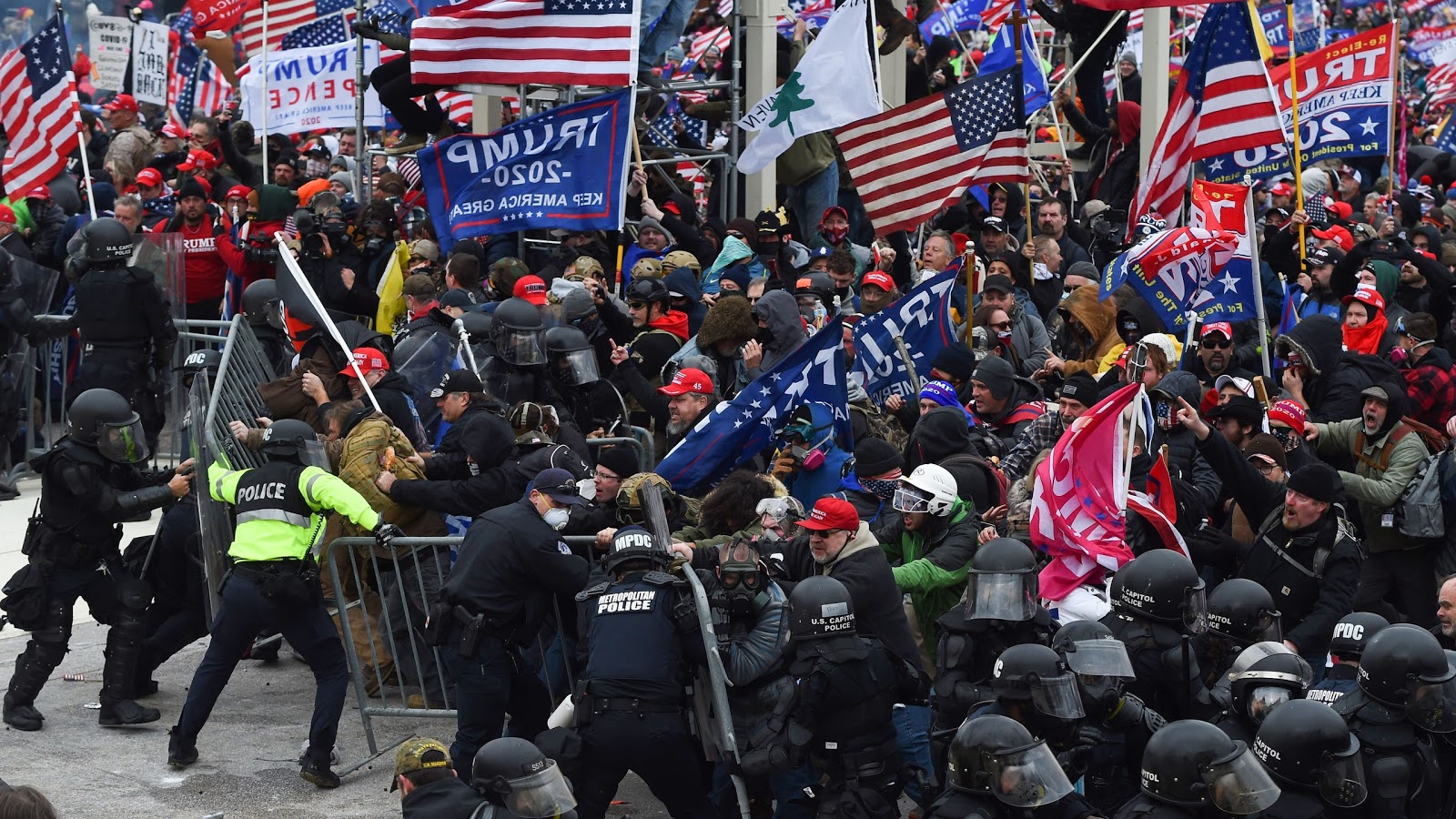A faction of the ‘ultimate patriots’ took up the callings to arms this week, storming the Capitol building to protect their country and defend their president. After months of watching their president declare a rigged election, demanding them to stand up and #StoptheSteal, it was time for a fight. The attempted coup was seen as a shock for most of America and the rest of the world, but was it really a surprise?
More than 100 arrests taken place are connected to the riot, but let’s be clear; President Trump orchestrated this, but big tech firms commandeered it and allowed disinformation to spread online. Using all the tricks in the book of a populist movement, Trump and his republican teammates have been building this anger and unrest for years, using social media to spread fake news and conspiracy theories. After the events at the Capitol last week, social media sites finally had to admit that their fact-checking of the President was not enough, and he was banned from all mainstream social media sites.
But after four years of his Twitter tyranny, is it too late? Trump captivated twitter like no other, and the impact of this communication strategy will not go away quickly. It was clear that Trump was not going to admit defeat; for months before the election, he repeated that the election must be rigged if he lost. Trump had a captivated audience of supporters, following his every word (and tweet). The use of the hashtag #StopTheSteal grew steadily even before the election, as conspiracy theories began to spiral suggesting Democrats had rigged the election through voter fraud. With no proof of these allegations, the claim was thrown out of nearly every state and county court, and finally the Supreme Court. The judicial process should have convinced Trump supporters that this was not a rigged election, but instead, the courts’ actions simply reinforced the belief that the liberal elite was against them.
And this became their main narrative online; it was Trump supporters against the dark forces of the deep state. Conspiracy theories such as QAnon and Pizzagate, which were once secluded to dark corners of the internet, are now spreading like wildfire on Twitter and Facebook. Social media is the perfect breeding ground for disinformation, as it is low cost to join and share content. Until recently, social media sites didn’t fact-check any posts or advertisements.
The dangers of this were thoroughly illustrated in 2016, when a man entered a pizza parlour in Washington D.C. and fired shots, having been convinced by the Pizzagate conspiracy theory that was shared on Twitter by Michael Flynn Junior, the son of Trump’s national security advisor. Three times as much pro-Trump fake news circulated on Facebook than pro-Clinton fake news in 2016, and some political scientists argue that fake news even had an impact on the result of the 2016 US election.
The responsibility of these social media sites for the impact disinformation has had on society has been heavily debated in recent years; Facebook and Twitter CEOs Mark Zuckerburg and Jack Dorsey have been called in for questioning by the UK parliament and the US Congress to discuss what changes should be made. Both sites have, begrudgingly, made changes to their terms and conditions, and have begun the humongous task of fact-checking posts made by those in power. Of course, Jack Dorsey could never have predicted when he started Twitter that a future president would use it to start an insurrection. Still, big tech companies should have addressed these issues earlier, which could have prevented the death and destruction of the 6th of January.
The 6th of January was always going to be a tense affair; the result of Georgia’s runoff and a special election would come in, which would decide whether the Democrats or Republicans would control the Senate for the next two years. This is standard procedure in Georgia, which has used run-off elections since 1966 when none of the candidates gains 50% of the votes.
But this year, the pressure was well and truly on as there was so much to lose, and so much to gain. After Trump’s defeat on election day, the Republicans needed to hold onto the senate if they were to have any control over the Biden administration. As it became clear that Mike Pence and the Republicans in the House and Senate would allow the peaceful transition of power, Trump supporters turned on them too, with talk of storming the capitol and executing the ‘treasonous’ members of congress online.
Trump harnessed this anger as his last resort and organised a speech outside the White House on the 6th of January. Encouraged by Trump, his supporters started to spread the message online. By the time the results rolled in on the morning of the 6th, hundreds of supporters were outside the White House, believing that this was the time for the revolution. After months of Trump commanding them to “stand back and stand by”, it is hardly surprising that they would go down without a fight.
Biden’s inauguration is in just a few days, ending Trump’s presidency. This may be the end of Trump’s reign, but it is unlikely to be the end of this movement. All over the globe, we see populist movements, encouraged by fake news and conspiracy theories, harnessing the power of social media. There is no clear way out of this mess, but the most important first step is to regulate big tech. Only then, can we start to heal the divides in our democracies.
Featured image: Rioters storming the US Capitol building/ credit: GQ

